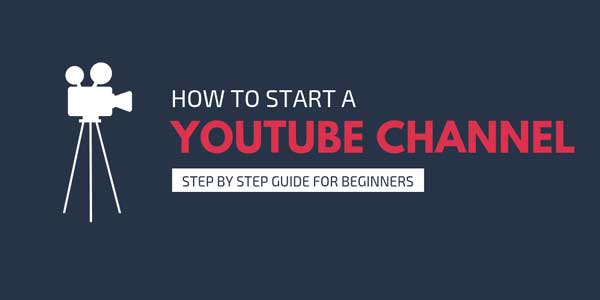
Nowadays, it seems like everyone is launching a YouTube channel, and the popular theme going around is that it’s a great way to tons and tons of money on the side (that is if it doesn’t become so successful that you get to quit your day job!).
Honestly, what better gig could there be? You get to become popular by racking up followers, stimulate your creativity through video production, and grow an audience of adoring fans.
It should be pretty straightforward, right? Just pick up your smartphone, design a nice video backdrop, and hit record?
As much as I’d like it to be true, starting a profitable YouTube channel just isn’t that easy.
It’s really, really, serious work. But it is worth it. I can say that now that I’ve created a successful blog and also two profitable YouTube channels.
Was it fun? Many times.
Was it worth it? Absolutely.
And I want that for you. This is why, today, I’m going to walk you through what it took to create a successful YouTube channel that makes you money.
You’re going to learn to set goals and expand your skillset, and if you commit, you’ll see your follower count start growing in no time.
Table of Contents
Step 1: Pick Your Niche
You might have thought that step 1 was creating a YouTube channel, but that’s actually putting the cart before the horse.
Before you start creating anything, it’s essential that you double down on who your target audience is. If you don’t, you’ll find yourself creating content that doesn’t attract anyone. Planning this saves you a lot of time and stress.
To figure out what your ideal audience and niche are, ask yourself the following questions:
- What topics would you be interested in continually learning more about? If when growing up you loved Dungeons and Dragons, maybe you’ll like to rekindle that old passion? Or maybe you find yourself rabbit-holing down a particular SubReddit way too late into the night.
- Is there a particular market you’ve always wanted to break into? Maybe you’ve always been interested in the coffee industry or have always been fascinated by a niche tech item like paper tablets?
- What numbers are you trying to grow? Subscriber count? Views? Website traffic? Your approach to creating and promoting your content will likely change depending on what metrics you’re aiming to raise.
As much as I advocate for pursuing your own interests, it’s also critical that you choose a niche that has a good chance of making you money. If you love talking about sprinkled donuts but no one else seems to care, it might be best to choose a different direction.
That being said, you shouldn’t divorce your interests from your content. And the reason why is simple: if you’re making content that isn’t interesting to you, eventually you’re going to hate making it.
It’s also possible that you’ll be interested in a topic that has competition. Don’t panic! Just because someone is making good content doesn’t mean you can’t do it better and thus steal their audience.
Good competitors are like worthy rivals. They help you figure out what you can be doing better, but they also give you the opportunity to analyze what they themselves might be missing.
Do their videos have bad lighting? Do they spend too much time promoting products? Look to find cracks in the way they’re doing their YouTube channel. If you can fill those cracks in your own content, you’ll be well on your way to growing an audience.

Step 2: Expanding Your Skillset
The biggest barrier to creating a successful YouTube channel is usually not having skills with video. Most people simply don’t know how to properly shoot a video, let alone edit one properly.
The thing about barriers, though, is that you can get over them. If you lack video skills, you can check out any number of videos or blog articles that instruct you on how to start and improve.
But starting is the first step. Do it badly. Then get a little less bad. And if you do that a hundred times, you’ll eventually be good, and then you can go from good to great.
Here’s a tip: don’t try to learn everything at once. Creating a profitable YouTube channel doesn’t just require video skills. It would help if you also learned how to communicate, talk to a camera, and market your channel to help build awareness.
This can all be overwhelming, so we suggest taking it slow and starting with picking up video skills. A focused mind learns far more quickly and efficiently than a scattered mind.
Step 3: Focus On Delivering Value
If you want your YouTube channel to grow and become popular, you’re going to have to become an authority in your niche.
The key to becoming an authority is to be the person who:
- Knows their niche inside and out.
- Answers people’s questions.
- Solves people’s problems.
For instance, if I were to start another YouTube channel about, say, BlueTooth Technology, I’d have to constantly be learning about the tech, respond to YouTube comments/questions about the subject, and know-how to troubleshoot certain issues.
I might not use all the information I learn, but it may come in handy.
To deliver value, you’re going to have to become familiar with your audience’s problems and interests. An easy way to get started with that is just to observe what your competitors are creating.
What topics are they covering? Can you notice any trends? If their channels are successful, it means their doing something right, so don’t be afraid to take notes.
Another great place to conduct audience research in forums like Quora or Reddit. You’ll have to learn to separate the wheat from the chaff, but there are some real gold pieces in forums if you know how to dig for them.
This point should be obvious, but if you’re struggling to think of content to create, don’t just create carbon copies of your competitor’s stuff. It might seem like an easy win, but once your audience figures out what you’re doing, you’ll lose there trust and may never get it back.
Learn To Commit:
As you’ve probably gathered, creating a successful YouTube channel is no walk in the park. There are a lot of moving parts that require your attention and they’re all important to making this thing work.
Chances are you won’t see an uptick in traffic for a while, but that’s ok. Getting discovered by your audience is a process that requires patience and tenacity on your end. You can get discouraged, but don’t give up.
If you do start getting traffic, you can analyze your viewership’s data in your account’s YouTube Studio. Developing a mind for data analysis will be instrumental in growing your channel.
Why?
Because data lets you see exactly what’s been working so that you can repeat it; perhaps, more importantly, it tells you what hasn’t been working, so you can save yourself some time and drop fruitless initiatives.
Remember that creating a profitable, growing YouTube channel takes time. If you don’t have the skillset, you’re going to need to learn, and luckily the internet makes that easier than ever before.
This is not some get-rich-quick thing. This is hard work. But if you do it right, it just might pay off.

 About the Author:
About the Author:















Be the first to write a comment.